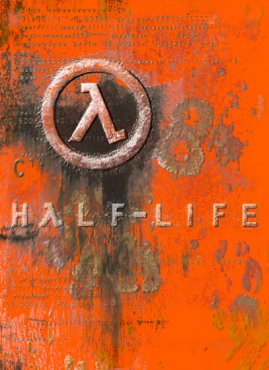
Half-Life is a 1998 first-person shooter (FPS) game developed by Valve Corporation and published by Sierra Studios for Windows. It was Valve's debut product and the first game in the Half-Life series. The player assumes the role of Gordon Freeman, a scientist who must escape from the Black Mesa Research Facility after it is invaded by aliens following a disastrous scientific experiment. The gameplay consists of combat, exploration and puzzles.

Valve Corporation, also known as Valve Software, is an American video game developer, publisher, and digital distribution company headquartered in Bellevue, Washington. It is the developer of the software distribution platform Steam and the game franchises Half-Life, Counter-Strike, Portal, Day of Defeat, Team Fortress, Left 4 Dead, and Dota.
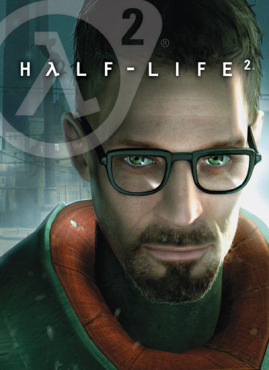
Half-Life 2 is a 2004 first-person shooter (FPS) game developed and published by Valve Corporation. It was published for Windows on Valve's digital distribution service, Steam. Like the original Half-Life (1998), Half-Life 2 combines shooting, puzzles, and storytelling, and adds new features such as vehicles and physics-based gameplay. The player controls Gordon Freeman, who joins a resistance to liberate Earth from the Combine, an interplanetary alien empire.

Gabe Logan Newell, also known by his nickname Gaben, is an American businessman who is the president and co-founder of the video game company Valve Corporation.

The Combine are a fictional multidimensional empire which serve as the primary antagonistic force in the 2004 video game Half-Life 2 and its subsequent episodes developed and published by Valve Corporation. The Combine consist of organic, synthetic, and heavily mechanized elements. They are encountered throughout Half-Life 2, Half-Life 2: Episode One, and Half-Life 2: Episode Two, as well as Half-Life: Alyx, as hostile non-player characters as the player progresses through the games in an effort to overthrow the Combine occupation of Earth.
Alyx Vance is a fictional character from Valve's Half-Life video game series. She is introduced as a non-playable, supporting character in Half-Life 2 (2004), accompanying the player's character, Gordon Freeman, throughout much of the game. She subsequently appears in a similar capacity in Half-Life 2: Episode One (2006) and Episode Two (2007), and as the titular protagonist of the VR game Half-Life: Alyx (2020).

Ravenholm is a fictional ghost town in the first-person shooter game Half-Life 2, developed by Valve Corporation and released in 2004. It serves as the primary setting for the game's sixth chapter, "We Don't Go to Ravenholm", which follows the game's protagonist Gordon Freeman as he journeys through the area as part of an escape from Black Mesa East after it is attacked by Combine forces in order to reach a nearby Resistance outpost. Ravenholm is a mining town in Eastern Europe destroyed by a Combine bombardment using headcrabs that turned its residents into hostile zombies, its sole survivor, Father Grigori, offers his assistance to Freeman throughout the level, culminating in a last stand at the town's cemetery.
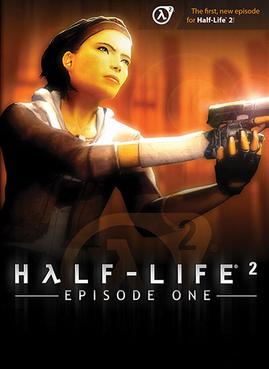
Half-Life 2: Episode One is a 2006 first-person shooter game developed and published by Valve for Windows. It continues the story of Half-Life 2 (2004); as scientist Gordon Freeman, players must escape City 17 with Gordon's companion Alyx Vance. Like previous Half-Life games, Episode One combines shooting, puzzles and storytelling.
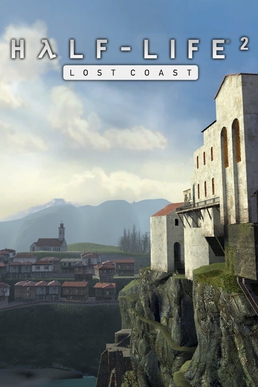
Half-Life 2: Lost Coast is an additional level for the 2004 first-person shooter game Half-Life 2. Developed by Valve, it was released on October 27, 2005, through the Steam content delivery service as a free download to owners of the Windows version of Half-Life 2. Players control the Half-Life protagonist Gordon Freeman as he travels up a coastal cliff to destroy a Combine weapon in a monastery.

Concerned: The Half-Life and Death of Gordon Frohman is a webcomic by Christopher C. Livingston that parodies the first-person shooter video game Half-Life 2. The comic is illustrated with screenshots of characters posed using Garry's Mod, a tool which allows manipulation of the Source engine used by Half-Life 2. The comic ran from May 2005 to November 2006 and had 205 issues.

Erik Wolpaw is an American video game writer. He and Chet Faliszek wrote the pioneering video game website Old Man Murray. He subsequently worked for game developers Double Fine Productions and Valve, and is known for his work on video games including Half-Life 2, Psychonauts, Portal, Portal 2 and Half-Life: Alyx.

Half-Life 2: Episode Two is a 2007 first-person shooter game developed and published by Valve. Following Episode One (2006), it is the second of two shorter episodic games that continue the story of Half-Life 2 (2004). Players control Gordon Freeman, who travels through the mountains surrounding City 17 to a resistance base with his ally Alyx Vance. Like previous games in the series, Episode Two combines shooting, puzzle-solving and narrative elements, but adds expansive environments and less linear sequences.
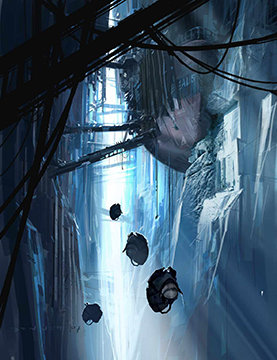
Half-Life 2: Episode Three is a canceled first-person shooter game developed by Valve. It was planned as the last in a trilogy of episodic games continuing the story of Half-Life 2 (2004). Valve announced Episode Three in May 2006, with a release planned for 2007. Following the cliffhanger ending of Episode Two (2007), it was widely anticipated. Marc Laidlaw, the writer for the Half-Life series, said he intended Episode Three to end the Half-Life 2 story arc.

Half-Life is a series of first-person shooter (FPS) games created by Valve. The games combine shooting combat, puzzles and storytelling.

A gravity gun is a type of device in video games, particularly first-person shooters using physics engines, whereby players can directly manipulate objects in the world, often allowing them to be used as projectiles against hostile characters. The concept was popularized by the gravity gun found in Valve's Half-Life 2, as well as the Temporal Uplink found in Free Radical Design's TimeSplitters: Future Perfect; although a similar concept was used by id Software during the production of the earlier game Doom 3, eventually leading to the introduction of a physics-based weapon in the expansion pack Resurrection of Evil. Later games, such as Portal, BioShock, Crysis, Dead Space, and Garry's Mod have been influenced by the success of these physics-based weapons, adopting their own styles of comparable abilities or weapons.
This is a list of characters in the Half-Life video game series, which comprises Half-Life, Half-Life 2, Half-Life: Alyx, and their respective expansion packs and episodes.

Black Mesa is a 2020 first-person shooter game developed and published by Crowbar Collective. It is a third-party remake of Half-Life (1998) made in the Source game engine. Originally published as a free mod in September 2012, Black Mesa was approved for commercial release by Valve, the developers of Half-Life. The first commercial version was published as an early-access release in May 2015, followed by a full release in March 2020 for Linux and Windows.

Half-Life: Alyx is a 2020 virtual reality (VR) first-person shooter game developed and published by Valve. It was released for Windows and Linux, with support for most PC-compatible VR headsets. Set five years before Half-Life 2 (2004), players control Alyx Vance on a mission to seize a superweapon belonging to the alien Combine. Like previous Half-Life games, Alyx incorporates combat, puzzles and exploration. Players use VR to interact with the environment and fight enemies, using "gravity gloves" to snatch objects from a distance, similarly to the gravity gun from Half-Life 2.

Hunt Down the Freeman is a 2018 first-person shooter video game developed and published by indie developer Royal Rudius Entertainment through the Steam distribution platform. It is a fangame of the Half-Life series by Valve Corporation, and follows U.S. Marine Mitchell Shephard through several major events in the series' canon as he attempts to find and kill Gordon Freeman.


















